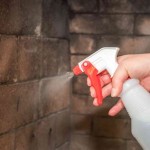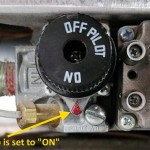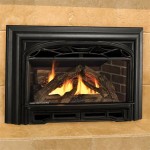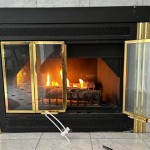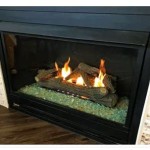Gas Fireplace Inserts: A Northern Virginia Heating Solution
Gas fireplace inserts offer a practical and aesthetically pleasing solution for homeowners in Northern Virginia seeking to upgrade existing fireplaces or improve heating efficiency. These inserts, designed to fit within the firebox of an existing masonry or prefabricated fireplace, utilize natural gas or propane to produce heat, providing a convenient alternative to traditional wood-burning fireplaces.
Northern Virginia experiences significant temperature fluctuations throughout the year, with cold winters necessitating reliable and efficient heating systems. Gas fireplace inserts provide supplemental or even primary heating for specific rooms or areas of a home, contributing to overall energy savings and enhanced comfort. The versatility of these inserts, coupled with advances in technology and design, makes them an increasingly popular choice for homeowners throughout the region.
The installation of a gas fireplace insert requires professional expertise to ensure proper venting, gas line connections, and adherence to local building codes. Selecting a reputable installer is paramount to guaranteeing safety and optimal performance. Homeowners should thoroughly research different models and features to determine the most suitable insert for their individual needs and the specific characteristics of their existing fireplace.
Key Point 1: Advantages of Gas Fireplace Inserts
Gas fireplace inserts offer several distinct advantages over traditional wood-burning fireplaces. The elimination of wood as a fuel source translates to reduced maintenance, as there is no need to chop, store, or haul firewood. This also eliminates the mess associated with wood ash and debris, simplifying the cleaning process.
Gas fireplace inserts offer superior heating efficiency compared to traditional fireplaces. Open fireplaces are notoriously inefficient, often drawing heated air out of the room and up the chimney. Gas inserts, on the other hand, are designed to radiate heat into the room, with some models achieving efficiency ratings of 70% or higher. This results in lower energy bills and a more comfortable living environment.
The convenience of gas operation is another significant benefit. Most gas fireplace inserts feature electronic ignition systems and thermostatic controls, allowing homeowners to easily adjust the heat output and maintain a consistent temperature. Some models even offer remote control operation, further enhancing convenience.
Environmental considerations also favor gas fireplace inserts. Burning natural gas or propane produces significantly fewer emissions than burning wood, contributing to improved air quality. The reduced need for wood harvesting also helps to preserve forests and reduce the environmental impact associated with logging.
The aesthetic appeal of gas fireplace inserts is another compelling advantage. These inserts are available in a wide range of styles and finishes, allowing homeowners to customize the appearance of their fireplace to complement their existing décor. Options include realistic log sets, decorative glass embers, and various flame patterns, creating a visually appealing and inviting ambiance.
Key Point 2: Factors to Consider When Choosing a Gas Fireplace Insert
Selecting the right gas fireplace insert requires careful consideration of several factors. The size of the area to be heated is a primary determinant of the required heating capacity, measured in British Thermal Units (BTUs). A larger room will necessitate a higher BTU rating to effectively maintain a comfortable temperature.
The dimensions of the existing fireplace opening are crucial for ensuring a proper fit. Accurate measurements of the firebox width, height, and depth are essential for selecting an insert that will fit snugly and securely. Professional installers typically conduct a site assessment to verify these measurements and identify any potential installation challenges.
Venting requirements are a critical safety consideration. Gas fireplace inserts require proper venting to safely exhaust combustion gases. Direct vent inserts draw combustion air from outside the home and exhaust the gases directly through a dedicated vent system, while B-vent inserts utilize existing chimneys for venting.
Fuel type is another important consideration. Gas fireplace inserts can be fueled by either natural gas or propane. Natural gas is typically less expensive and more readily available in urban areas, while propane is a viable option for homes without natural gas service. The choice of fuel will affect the operating costs and the installation requirements.
Features and options can significantly enhance the convenience and functionality of a gas fireplace insert. Thermostatic controls allow for precise temperature regulation, while remote control operation provides added convenience. Some models offer features such as blowers, which circulate heated air more efficiently, and safety shut-off valves, which automatically shut off the gas supply in the event of a malfunction.
Aesthetics also play a role in the selection process. Gas fireplace inserts are available in a wide range of styles and finishes, allowing homeowners to choose an insert that complements their existing décor. Consider the style of the room and the desired ambiance when selecting an insert. Options include traditional log sets, contemporary glass embers, and various flame patterns.
Key Point 3: Installation and Maintenance
Proper installation is paramount to ensuring the safe and efficient operation of a gas fireplace insert. It is highly recommended to hire a qualified and licensed gas fireplace installer. These professionals have the expertise and experience to properly connect the gas line, install the venting system, and ensure that the insert meets all applicable building codes.
The installation process typically involves several steps. First, the installer will assess the existing fireplace and chimney to determine the suitability for a gas insert. This may involve cleaning or repairing the chimney to ensure proper venting. Next, the gas line will be connected to the insert, and the venting system will be installed. Finally, the insert will be placed in the firebox and tested to ensure proper operation.
Regular maintenance is essential for maintaining the performance and longevity of a gas fireplace insert. Annual inspections by a qualified technician are recommended to ensure that all components are functioning properly. This includes inspecting the gas line, venting system, and burner assembly.
Cleaning is an important part of routine maintenance. The glass door should be cleaned regularly to remove soot and debris. The burner assembly may also need to be cleaned periodically to remove any buildup that could affect the flame pattern or heating efficiency. The area surrounding the insert should be kept clear of flammable materials.
Safety precautions should always be observed when operating a gas fireplace insert. Never leave the fireplace unattended while it is in operation. Ensure that smoke detectors and carbon monoxide detectors are installed and functioning properly. Familiarize yourself with the safety features of the insert, such as the safety shut-off valve, and know how to operate them in the event of an emergency.
Addressing potential problems promptly is crucial for maintaining the safe and efficient operation of a gas fireplace insert. If you notice any unusual odors, noises, or flame patterns, immediately shut off the gas supply and contact a qualified technician. Do not attempt to repair the insert yourself, as this could be dangerous.
Choosing a reputable brand and model can also contribute to long-term reliability and performance. Research different manufacturers and read reviews before making a purchase. Consider the warranty offered by the manufacturer and the availability of replacement parts.
Properly maintained gas fireplace inserts offer years of reliable and efficient heating. By following these guidelines for installation and maintenance, homeowners in Northern Virginia can enjoy the benefits of a gas fireplace insert for many years to come.
Investing in quality components for gas fireplace inserts can contribute to the unit's longevity and performance. Opting for durable materials and advanced technology can minimize the need for frequent repairs and replacements. Paying attention to the details, such as the quality of the log set or the efficiency of the blower, can significantly impact the overall satisfaction with the gas fireplace insert.
The long-term cost savings associated with gas fireplace inserts often outweigh the initial investment. The increased heating efficiency, reduced maintenance, and elimination of wood costs contribute to significant savings over the lifespan of the unit. Homeowners should factor in these long-term savings when evaluating the cost-effectiveness of gas fireplace inserts.
The availability of various financing options can make gas fireplace inserts more accessible to homeowners. Many retailers and installers offer financing plans that allow homeowners to spread the cost of the insert over time. Exploring these financing options can help make gas fireplace inserts a more affordable heating solution.

Gas Fireplace Inserts Aspen Green Works

Gas Fireplace Inserts Aspen Green Works

Gas Fireplace Inserts Aspen Green Works

Gas Fireplace Inserts Aspen Green Works

Gas Fireplace Inserts Aspen Green Works

Gas Insert Fireplace Installation Northern Va Winston S Chimney

Gas Propane Fireplace Inserts

Gas Fireplace Insert S Expert Installation

Gas Propane Fireplace Inserts

Gas Fireplace Inserts Aspen Green Works
Related Posts

